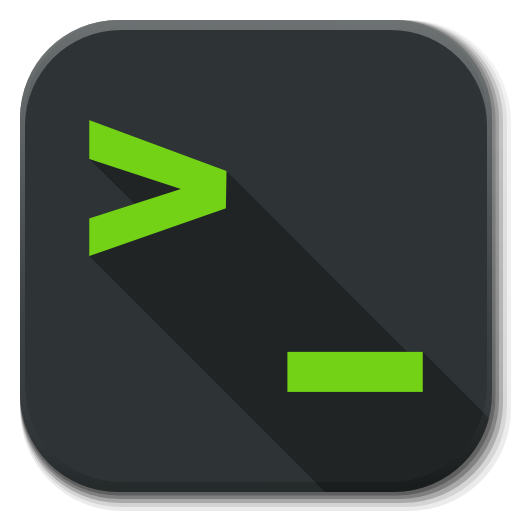I’ll go first, I took my mom’s college textbooks which came with discs for a couple distros and failed to install RHEL before managing to get Fedora Core 4 working. The first desktop environment I used was KDE and despite trying out a few others over the years I always come back to plasma. Due to being like 12, I wanted to run my games on it, and man wine was not nearly as easy to use (or as good) as it is nowadays. So I switched back to windows until around 2015 or so when I spent the next few years trying to replace windows as much as I could. Once valve released proton, I switched fully and have t looked back, unless my still there windows partition tries to take over my computer when I restart it at least.
deleted by creator
Started on Mint at 13 years old and never going back to Windows. I use Artix btw
Sounds like my story. I think I started with Ubuntu, but installed mints cinnamon Desktop environment later on.
I suppose this made you work in it later on as well?
deleted by creator
Kernel panic after installing Redhat 6, not RHEL, in the late 90s or early 2000s. Later tried 7 and has been using Linux since.
I have an old hp mini netbook with an atom processor and 1gb RAM. I needed something light to run on it so I put Lubuntu on it.
It was fun dabbling in it and getting everything to work but I haven’t really messed with it since.
I was probably 40.
I run Win on my main pc only for gaming really. Maybe if linux gets better support I would consider switching over.
I was about 16 and made a Slax CD to get around my schools locked down WinNT/XP installs. After school I ran Ubuntu on an '06 Acer laptop for a while but later switched to W7 for gaming. When W10 launched with ads in the start menu I moved to Debian and have been totally happy since then.
I can’t remember if my dad sent me up an Ubuntu server on an azure hosted VM or if we installed it on an old laptop that was shitting out but either way, I’ve always gone back and forth since I was like 13 or 14.
For servers, I use Linux exclusively. I don’t see a need for windows on them and as such have just always used either Ubuntu or RHEL for anything that I need to treat as a server. For laptops, I generally started with windows and then installed Linux a few years later but if I get a new one it’s gonna be Linux out of the gate.
My desktop, on the other hand, is different. I’ve always used windows on my gaming desktops due to compatibility but a few years ago I tried Linux as my only OS for a bit. I loved using it at first, but then I ran into all the issues with trying to run a beefy gaming PC on Linux. Fan curves were a nightmare to set and half the time they couldn’t find my fans so they were either at full blast or off, and I hated the idea of using the bios because I don’t want to turn my PC off to set them. RGB was okay but some of my stuff didn’t get found, and all I wanted was a solid color but it was very hard. Some games didn’t work and they were the ones I wanted most.
Ultimately, I went back to windows but then a year or two later the steam deck came out, so gaming has come a long way. I’m very much considering it again but I have to do my research beforehand to see what tools I’ll need. If anyone has any suggestions, I’ll take them!
I’m not sure what fan issues you were hitting, but I’ve been gaming on linux (with nvidia on manjaro) for the last couple of years just fine. Steam/proton has made so much possible that wasn’t before.
Can’t recommend manjaro btw. EndeavourOS is my new go-to.
Wild. Maybe I did something wrong but I tried finding a simple interface to set fan curves and most places I found were terminal-based, and as much as I love the terminal, I don’t like it for things like fan curves.
Also for OS, last time I went with Pop!_OS and I have that on my laptop now, but I’m not that picky. I just liked that Pop!_OS had drivers built in for Nvidia.
I do plan on trying again, but my #1 priority is standing up this Poweredge R720XD I have sitting behind me. Server racks are too expensive.
To be clear, I haven’t messed with my fan curves on linux, I’ve just never had an issue with my fans being on “full blast or off”.
I know manjaro and endeavour both have tools that handle proprietary nvidia driver installation, but I’ve only tried manjaro’s so far (
mhwd). It works fine, but running updates are a bit of a manual chore. Completely defeats the purpose of the tool imo.Ah okay, I get you now. When I said “full blast or off” what I meant was using the tools I found, I could either turn them on or off, I couldn’t find the granular controls to set like, “at +10 degrees go to 25% power” type thing. And again, maybe I was doing it wrong, but I’m pretty fluent with Linux and just had no idea what I was doing.
Accidentally fried the windows install on my first laptop in 2005 or 2006. My friend told me to try Ubuntu and I loved it. A few years later I had an art school GF and she introduced me to Macs. I wanted to be cool so I upgraded to a 2008 unibody MacBook. I used Mac OS for a while until apple started to really wall off the garden and the laptop was no longer supported. Got a new Dell XPS around 2016 and got back on the Linux train. Not hopping off again except maybe for a BSD.
Tried installing debian in 2002 but had no idea what I was doing editing xorg configs so didn’t succeed. Succeeded in running knoppix soon after, but didn’t really know what to do with it because I mainly used a computer for gaming in those days.
Ran ubuntu in 2007 for a while but I needed to do too many things in a VM so I skulked back to windows.
Used linux for random bits and pieces over the years but was always too tied to art software and games. Proton fixed the games side of things in 2018 so I decided to go all in reworking my art workflow to be linux focused because I wanted not to worry about needing a windows license for all my machines, buying expensive software, etc. etc. (And I wanted to get into creative programming more.)
Running linux has made automation and programming a much more seamless part of the way I use computers and I am endlessly grateful for this. General computing is fun again and I now have a heap of skills I always wanted.
It was Ubuntu 8.04 in around 2013. I only did it to get a promotional item for Team Fortress 2 called Tux, a cosmetic item that looks like… Tux. I remember hating the UI/UX and promptly uninstalled it afterwards.
Eventually circled back around to Xubuntu for my low-end hardware and various other distros. Currently daily driving Fedora.
is that cosemtic still around
sadly no longer available to get
Slackware 1998. I spent 6 months in a text only freebsd install in 1999. Because of a dram issue I wasn’t able to run windows without blue screens. Text based internet wasn’t that bad in 1999. I could load up xwindows if I wanted to see a picture but rarely did. Talking on irc somebody mentioned memtest and my memory had a very long warranty so I took it back to the store. Then I spent the next several years addicted to quake/quake2
Ubantu in 2007 ish. Games didn’t work.
Red Hat 5.2. 13 years old. Came from WFW 3.11. Used Red Hat for about six months, then switched to FreeBSD for the next decade.
Never went back to Windows. Windows has always been a thing that school and work computers use. My kids have never used it.
Started dabbling in Linux some 15+ years ago, dualbooting with windows XP. Tried bunch of different distros - suse, Slackware, RedHat (pre-enterprise) etc. Didn’t really understand it and kept going back to windows. A classmate had told me Gentoo was good for learning Linux. So once I was trying to shrink my windows partition to make space for another dualboot experiment, and in the process borked my partitions. They were probably recoverable, but I got furious, ragequit windows and installed gentoo on the whole disk and used it as my daily. That helped me learn.
Knoppix in 2nd year at Uni. It made me more productive because there were few distractions from programming. So zen.
SuSE @ 1999, then Slackware in the same year.
Tried SuSE (bought as a box) as an alternative to the annoying, unstable and insecure Windows 9x, it was also the time when Linux as an alternative desktop OS was starting to get hyped in the media. Especially in regards to stability and security. Well, it wasn’t hard to beat Win9x in those areas. Tried it a bit, didn’t like it that much (I think it was KDE 1.x) and also didn’t understand much of it. I was still intrigued though and wanted to really learn it starting from the commandline, but I felt I couldn’t with all the SuSE stuff like YaST being preinstalled.
So I bought a big book (by Michael Kofler), it was the de facto standard book for really learning Linux from the ground up back then. And I chose a distribution which would be much more minimalistic (because I felt that makes it easier to learn). So I installed Slackware. I used it for like 3 years and learned a lot (all the basics), it was a hard journey though and other distros started appearing and they promised to be more modern or better than Slackware.
So I tried Debian next, then Crux, then Arch. This was all around 2002-2006. I can’t remember exactly how long I used each, but I do know I’ve used Slack for quite a lot, then Debian rather shortly, then Crux also not very long (basically I just wanted to test a source based distro but compile times were annoyingly long back in the day), and then it was Arch all the way. Arch was fast, rather simple, always up to date, and it had the great AUR. I didn’t ever look back.
I did take a break from Linux as my primary OS from approximately 2009 to 2017, mostly due to playing a ton of video games (Windows only, not runnable at all on Linux back then) and also due to my career path making me work with lots of Windows Servers, Powershell and other Microsoft stuff.
Since about 2017/2018 I’m back to Linux as primary OS (Arch, again) and haven’t looked back since. Even managed to fully delete all physical Windows partitions now (I only keep it in a VM in case I need to test something).
I’m testing NixOS on my notebook currently, it seems to be “the future”, but my main desktop will probably stay Arch for a bit longer still.
Looking back at using Slackware early on, I don’t regret it, since I learned a ton, but it was tough using Slackware around the 2000s. I still remember a lot of fighting with programs which wouldn’t compile due to dependency errors or other compilation errors. And a lot of Google searches for various compilation errors leading to rare and hard to understand solutions found in random forum posts. Compared to that, any Linux distro feels like mainstream these days. But it was an efficient way to learn.








